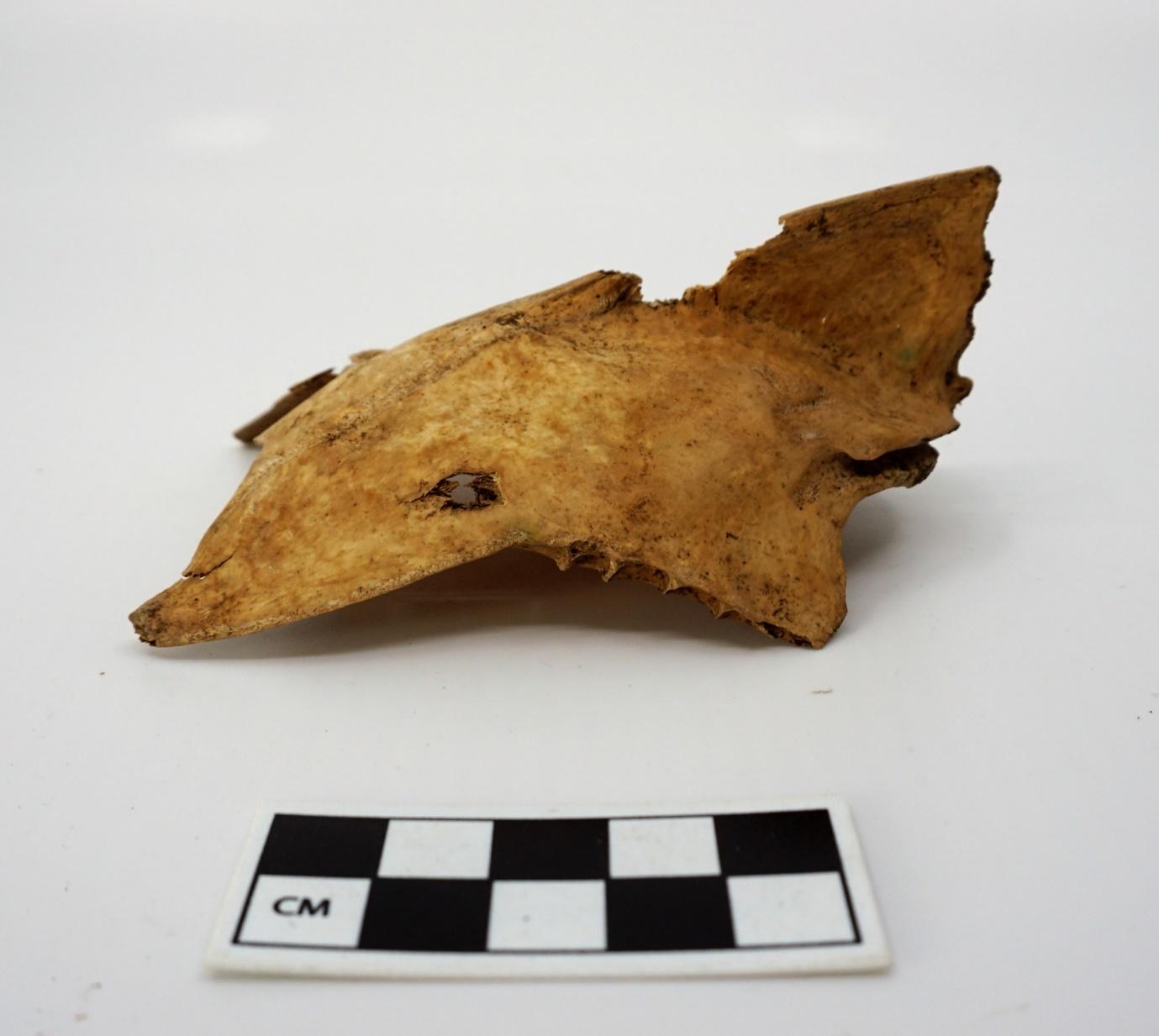
1 minute read
Pig (Sus scrofa
Pig (Sus scrofa)
Figure 12: Skeleton of a pig with the tibia marked in orange.
A single pig bone was found at Litlibær, it came from unit 13796 which was an ash dump. The
bone was an unfused distal tibia which had been sawn (Figure 13). While pigs where part of the domesticates imported by settlers to Iceland in the late 9th century they seem to have
become extinct around 1200 (McGovern et al., 2007). Pig farming did not start again in
Iceland until 1900 and was on a very small scale until around the 1930s (Olgeirsson, 2005, p.
55). However, there are archaeological (Harrison & Snæsdóttir, 2012; Pálsdóttir, 2008;
Perdikaris, Amundsen, & McGovern, 2002) evidence for import of pork in the form of salted
hams and also reports of occasional import of live piglets for rearing by foreign traders
(Olgeirsson, 2005, p. 41). It is likely that this sawn juvenile pig tibia represents a purchased
piece of ham rather than pigs being kept on the site.

Figure 13: Sawn juvenile pig tibia from Litlibær ÞJMS no. 2012-22-1571. Scale 2 cm. Photo: Albína Hulda Pálsdóttir.
Table 14: Sawn pig (Sus scrofa) tiba from Litlibær. Measurements in mm following von den Dreisch (1976).
Þjms number Context Date Context type Species Bone End Frag Texture Fusion Butchery Age Side Ref# Bd SD 2012-22-1571 13796 2012 ash dump Sus scrofa Tibia Distal 10 2 Unfused Sawn Juvenile Right 38 32,31 21,28








